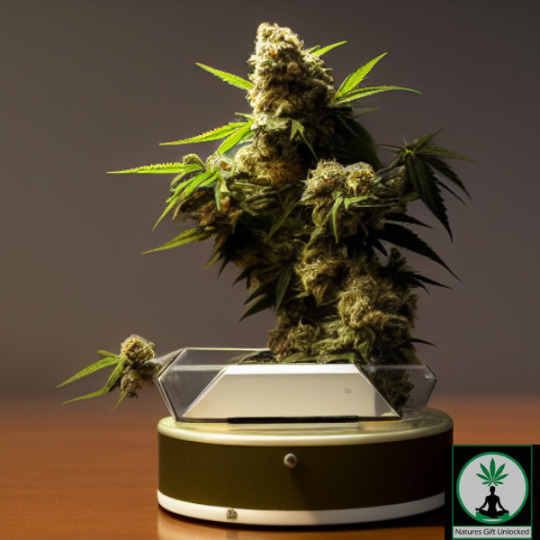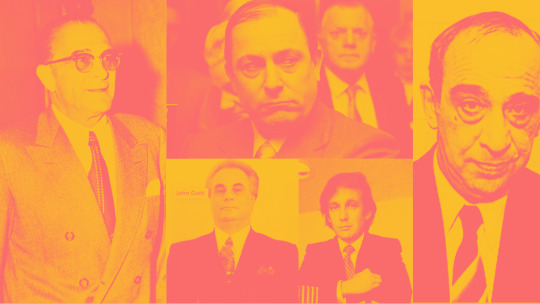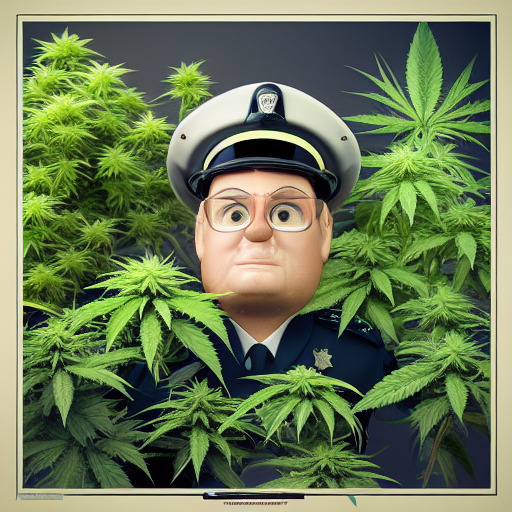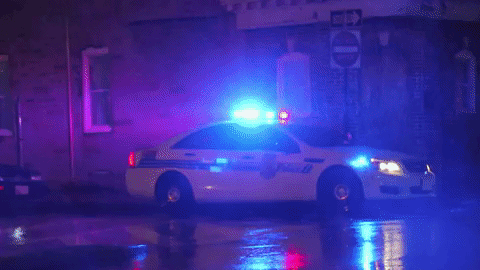#drugpolicy
Explore tagged Tumblr posts
Text

The History of Marijuana Prohibition: Unraveling the Reasons Behind its Illegality
Marijuana, a plant with a long history of medicinal and recreational use, has faced a complex journey towards its current legal status. Understanding the reasons behind its prohibition sheds light on the socio-political factors that influenced drug policies. Let's explore the origins of marijuana's illegalization and uncover some important facts.
Facts about Marijuana Prohibition:
The criminalization of marijuana in the United States began in the early 20th century, fueled by racial prejudice and political motivations.
The Marihuana Tax Act of 1937 was the first federal law to restrict the use and distribution of marijuana, effectively making it illegal.
The "Reefer Madness" era of the 1930s depicted marijuana as a dangerous drug, leading to exaggerated claims about its effects on users.
The War on Drugs initiated in the 1970s escalated marijuana enforcement efforts and contributed to its continued illegal status.
Despite growing evidence of marijuana's medicinal benefits, it remained classified as a Schedule I drug under the Controlled Substances Act.
Read the full article to delve deeper into the fascinating history of marijuana prohibition and its implications on society.
#MarijuanaProhibition#HistoryofMarijuana#CannabisLaws#DrugPolicy#LegalizationDebate#WarOnDrugs#MarijuanaLegislation#DrugProhibition#MarijuanaHistory#MarijuanaResearch
12 notes
·
View notes
Text
Modafinil is not typically included in standard drug tests, but specific tests can detect its presence. Here's what you need to know:
🔍 Detection Methods: Modafinil can be detected in blood and urine samples using GC-MS or LC-MS. The detection threshold is around 2 ng/mL.
⏳ Duration in System: Modafinil has a half-life of 12-15 hours and can remain detectable for up to 105 hours after ingestion. Factors like age, metabolism, and genetics can influence its clearance.
❌ False Positives: Modafinil's unique chemical structure makes false positives unlikely in drug tests.
🚫 False Negatives: False negatives occur when a substance is present but not detected. Proper testing methods minimize the risk of false negatives.
👨⚕️ Testing Scenarios:
Corporate World: Some employers conduct drug tests, especially if they suspect substance abuse or productivity issues.
Military Personnel: Modafinil use among military personnel is monitored due to its cognitive-enhancing effects.
Athletes: International sports organizations may test for Modafinil as it's considered a performance-enhancing drug.
Truckers and Drivers: Commercial drivers may undergo drug testing, including Modafinil, due to safety concerns.
⚠️ Legal and Medical Considerations: Using Modafinil without a prescription is illegal in many places. Prolonged use can lead to dependency and withdrawal symptoms. Users should be aware of legal implications and potential health risks.
Before using Modafinil, consider its impact on drug tests and consult with healthcare professionals for proper guidance.
#Modafinil#nootropic#cognitiveenhancement#drugtesting#metabolism#genetics#falsepositives#corporateworld#military#athletics#legalimplications#professionallife#healthandwellness#nervoussystem#pharmacology#smartdrugs#performanceenhancement#complianceregulations#drugpolicy
2 notes
·
View notes
Text
News | Oct 17, 2024
#2024#Israel#Lebanon#MiddleEastConflict#IndiaCanada#DiplomaticTensions#GlobalPolitics#TrumpOrganization#Lawsuit#Miami#KamalaHarris#MarijuanaReform#DrugPolicy#AnimalCruelty#HurricaneMilton#PetSafety#WeatherAlert#SouthIndia#HeavyRain#AviationSecurity#BombThreats#PublicSafety#TexasSenate#CruzAllredDebate#Election2024#TrafficAccident#PuneMumbaiHighway#RoadSafety#JimmyCarter#Voting2024
0 notes
Text
The Convergence of Economic Interests and Drug Trafficking: Lessons from Prohibition and the U.S. War on Drugs

The prohibition of drugs in the United States, a policy widely contested for its social and economic consequences, finds historical parallels in the Prohibition era (1920–1933). During Prohibition, the production, distribution, and sale of alcoholic beverages were banned in the U.S. Like today’s drug prohibition, Prohibition was driven by moral and public health arguments but resulted in a parallel economy of illegal activities and an increase in organized crime. This economic history essay aims to draw parallels between Prohibition and current drug policy, highlighting how prohibition simultaneously benefits large corporations, organized crime, and ultimately shapes global geopolitics and economic structures.
1. Prohibition: A Moratorium and the Growth of the Black Market
Prohibition in the United States was enforced by the passage of the 18th Amendment and the creation of the Volstead Act. Its declared purpose was to improve public health, reduce crime, and boost societal morality by eliminating alcohol consumption. However, the economic effect of Prohibition was the opposite of what its proponents envisioned. Far from eradicating alcohol, the ban fostered the creation of a lucrative black market, managed by mafia groups that saw opportunities to enrich themselves through the illegal sale of alcohol.
Entrepreneurs of the illegal market, such as Al Capone, quickly amassed fortunes by exploiting the continuous demand for alcohol, demonstrating that the criminalization of widely demanded products tends to create highly profitable underground markets. The rise of organized crime, the bribery of politicians and law enforcement, and the violence associated with territorial control among gangs were some of the most visible consequences. The black market became an essential part of the parallel economy, moving significant amounts of money and directly influencing politics.
Similarly, the international drug trade that flourished under drug prohibition has replicated many patterns established during Prohibition. Today, drug cartels operate in ways comparable to the organized crime bosses of the 1920s, profiting immensely from prohibition while perpetuating networks of corruption, violence, and political instability.
2. The Dual Benefit: Corporations and Organized Crime
During Prohibition, large corporations were not directly involved in the illegal alcohol trade, but other sectors of the economy benefited from the ban. A notable example was the pharmaceutical industry, which retained exclusive access to alcohol for medicinal purposes. Medicinal alcohol, legalized under medical supervision, was widely sold in pharmacies and distributed by doctors who prescribed "alcohol treatments" for a range of ailments.
Thus, the pharmaceutical industry found a way to profit from Prohibition by controlling access to a still-demanded substance that was now heavily regulated. The monopoly these companies held on medicinal alcohol offered them a chance to profit through exclusivity at a time when recreational alcohol consumption was outlawed.
This model is clearly reflected in today’s drug policy. The prohibition of recreational drugs, such as cannabis or even cocaine derivatives, provides large pharmaceutical corporations with a monopoly over controlled substances that might otherwise be produced more cheaply and widely. Through patents and stringent regulatory processes, these companies dominate the market for legal treatments for pain, anxiety, and other conditions, often utilizing opioid derivatives and anxiolytics that are sometimes more dangerous and addictive than the recreational drugs targeted by legislation.
This convergence of interests—between corporations that benefit from prohibition and criminal organizations that profit from the black market—creates a complex economic structure resistant to reform, as both sides have economic incentives to maintain the status quo.
3. Drug Trafficking and the Control of the Drug Market
In the absence of government regulation and competition in a legal market, international drug trafficking emerged as the primary supplier of recreational drugs to the United States and other global markets. Prohibition creates artificial barriers that drive up the prices of these substances, generating disproportionately high profit margins for those who control supply.
In the case of cocaine trafficking, for instance, growing coca in Latin American countries such as Colombia and Peru is extremely inexpensive. However, prohibition and the risks associated with international trafficking inflate the price of cocaine in consumer markets like the U.S. and Europe. Just like the crime bosses during Prohibition, drug cartel leaders have become powerful figures, controlling territories and wielding influence over local politicians and law enforcement.
The economic model of drug trafficking is, therefore, similar to that of organized crime during Prohibition, with a lucrative parallel economy based on illegality. Violence and territorial control are essential to securing market access and ensuring the continuity of illegal operations. Moreover, just like in the 1920s, political corruption and the complicity of local authorities are key elements that facilitate the persistence of these activities.
4. Trump, Drug Prohibition, and Economic Interests
Amidst this scenario, Donald Trump’s position against the legalization of drugs is a clear example of how the prohibition economy benefits both large corporations and criminal organizations. Although Trump has adopted tough rhetoric on combating drug trafficking and illegal drugs, his resistance to legalization or decriminalization policies reflects deeper economic interests.
On the one hand, Trump’s stance protects the profits of large pharmaceutical corporations, which rely on the exclusivity of controlled substances. The legalization of drugs like cannabis could threaten these profits by opening the market to new competitors who might provide natural, more affordable alternatives. On the other hand, by keeping the black market intact, his "law and order" policy ensures that drug trafficking profits remain high, much like the profits of organized crime during Prohibition.
The economic logic behind these policies suggests a "double game" in which the interests of different groups are protected at the expense of a more effective and socially beneficial solution. Drug law reform, focusing on legalization and regulation, has the potential to drastically reduce drug-related violence, dismantle corruption networks, and open the market to new businesses that could provide safer and more affordable alternatives for consumers.
Conclusion
Prohibition and the current drug ban share many similarities in terms of their economic and social consequences. Both periods witnessed the rise of lucrative black markets, the strengthening of organized crime, and the protection of large corporate interests that control legal markets. Prohibition, in both cases, creates artificial barriers that benefit those who hold monopolies over controlled substances, whether in the pharmaceutical industry or in drug trafficking.
Donald Trump’s stance against drug legalization, far from being a mere reflection of moral or public health concerns, can be seen as a manifestation of broader economic interests. Both large corporations and international drug traffickers benefit from maintaining prohibition, creating a vicious cycle that resists reform and perpetuates a system of violence, corruption, and inequality.
The economic history of Prohibition offers valuable lessons for today’s debate on drug legalization. Just as the repeal of Prohibition reduced the power of organized crime and created a regulated market for alcohol, drug policy reform has the potential to weaken drug cartels and create a legal market that benefits society as a whole.
#EconomicHistory#DrugProhibition#ProhibitionEra#DrugPolicy#OrganizedCrime#BlackMarket#PharmaceuticalIndustry#DrugTrafficking#LegalizationDebate#PublicHealth#EconomicInterests#SocialImpact#CriminalEconomy#TrumpAndDrugs#DrugWar#HistoricalParallels#PolicyReform#CriminalJustice#GlobalEconomics#RegulatoryImpact
0 notes
Text
How To Pass a Mouth Swab Drug Test ?
#DrugTest#MouthSwab#DrugTesting#SalivaTest#OralFluidTest#DrugScreening#DrugDetection#DrugFree#StayClean#EmploymentScreening#WorkplaceSafety#DrugAbusePrevention#DrugPolicy#DrugTestingMethods#KnowYourRights
0 notes
Text
RFK Jr.'s Vision for Addiction Recovery: A Controversial Approach
CLICK TO READ FULL ARTICLE - #Addiction #Fentanyl #Opiods Crises #AddictionRecovery #HealthAndWellness #SubstanceAbuse #OpioidCrisis #MentalHealth #RecoveryJourney #RFKJr #12StepProgram #DrugPolicy #SupportRecovery #HealingFarms #AddictionAwareness #Sober
When Robert F. Kennedy Jr. reflects on the path that has increasingly directed his attention towards health and wellness—culminating in his recent confirmation hearings for the role of U.S. Secretary of Health and Human Services—it’s intriguing to note that his journey did not originate from a typical medical background or a robust foundation in research. Instead, it was significantly shaped by…
#12-step model#addiction recovery#Department of Health and Human Services#drug policy#evidence-based treatment#fentanyl crisis#Health And Wellness#healthcare policy#opioid addiction#personal experience#recovery advocacy#rehabilitation programs#Robert F. Kennedy Jr.#San Patrignano
0 notes
Photo

Learn about Schedule 1 drugs, their classification criteria, examples, controversies, and implications. Discover the debates surrounding their legal and medical status. read the full article: https://bit.ly/3X4MEVC #Schedule1Drug #DEA #DrugPolicy #Marijuana #LSD #Psilocybin read more: what is schedule 1 drug
0 notes
Text

The Cost of Marijuana Prohibition: Examining Criminal Justice Reform
Disproportionate Incarceration: The criminalization of marijuana has led to a significant number of individuals, particularly from marginalized communities, being incarcerated for non-violent marijuana offenses. This has contributed to the issue of mass incarceration and strained the criminal justice system.
Economic Implications: Enforcing marijuana prohibition incurs substantial costs, including law enforcement resources, court proceedings, and incarceration expenses. Legalizing and regulating marijuana can create new revenue streams through taxation, job creation, and economic growth.
Racial Disparities: Marijuana prohibition has disproportionately affected minority communities, leading to racial disparities in arrest and conviction rates. Criminal justice reform aims to address these disparities and promote equity by reevaluating marijuana policies and implementing fair and just alternatives.
To read the full article and delve deeper into the cost of marijuana prohibition and the need for criminal justice reform, click the following link

#MarijuanaProhibition#CriminalJusticeReform#WarOnDrugs#DrugPolicy#JusticeSystem#SocialJustice#DrugReform#LegalizeMarijuana#EndingProhibition#PolicyReform
5 notes
·
View notes
Video
Saph Mac at Re:Generate, 2018
[Videography, shot and edited]
Last winter, presenter and media personality Saph Mac got invted to Re:Generate, an arts festival in London that centres on black voices, and the intersections of drug policy, racial injustice and liberation. There was great food, great art exhibitions, live performances and conversations happening. Here's a 5 minute cut of what it was like there.
1 note
·
View note
Link
Register here for FREE webinar: https://Bit.ly/NAPWWEBINAR

4 notes
·
View notes
Photo

@denverpost new article covering how #psilocybe #mushrooms will be on the #ballot this year! First #oregon and now #colorado are #pioneering this bold change to the #drugpolicy surrounding #magicmushrooms bravo bravo! Here is the link! https://www.denverpost.com/2019/02/01/psychedelic-mushrooms-make-denver-2019-ballot/?fbclid=IwAR2Kjq6WvQDClpzS11SFaN2Jij3NKVaVaNQfof8poLaXyovtTohFVLInqK0 #mushroomnews #fungi #fungifanatic #fungiofinstagram #mushroomlove (at Fungivore Mushrooms) https://www.instagram.com/p/BtYvlIbFcpH/?utm_source=ig_tumblr_share&igshid=wo4krlc26wa4
#psilocybe#mushrooms#ballot#oregon#colorado#pioneering#drugpolicy#magicmushrooms#mushroomnews#fungi#fungifanatic#fungiofinstagram#mushroomlove
0 notes
Photo

By Analyzing the Data related to taking a Different Approach to Drug issues, we can Learn the parts that Work and the parts that Do Not Work. If you look at the current Opioid Crisis, we can see that historically and by comparison to Other Countries a Hard Approach is Not going to Work. We need to take a Softer approach. Soft does Not Mean Weak. It means Encouraging rather than Forcing a Change. #internationalcomparison #learningfromothers #takethegood #leavethebad #encourage #dontforce #law #politics #drugpolicy #education (at Fresno, California)
#encourage#leavethebad#politics#law#education#learningfromothers#drugpolicy#internationalcomparison#takethegood#dontforce
0 notes
Text

@ejaf April 12th 2021
A big shout out to our partners taking part in #CND64 this week, including the International Drug Policy Consortium & @harmreductionintl!
It's estimated that people who use drugs are 29 times more likely to be living with #HIV than those in the general population. Criminalisation is not working - #DrugPolicy needs to focus on health, well-being and #HarmReduction.
By supporting initiatives like @supportdontpunish, we aim to challenge and change the narratives around drug use that prevent an effective public health response.
We are committed to making that sure no one is left behind.
#elton john#elton hercules john#sir elton hercules john#sir elton john#sir elton#i love elton#reginald dwight#reginald kenneth dwight#reg dwight#ejaf#elton john aids foundation
16 notes
·
View notes
Photo

IS LEGALIZING ALL DRUGS THE ANSWER? If you have been following the news lately it seems as if Cannabis is being legalized in a states, cities or countries every month. However, Mexico’s President Andres Manuel Lopez Obrador is taking it one step further and proposing a plan to #decriminalize all drugs. He claims that the current laws that prohibit drugs is a strategy that is not sustainable and that the war on drugs has created a public safety crisis. His administration has created a National Development plan for 2019-2024 to hopefully implement a better solution to the catastrophe that Mexico has been facing for a long time. Get the full article when you visit us @cannabexchange #mexico #mexicodrugs #reducecrime #legalizeitall #cannabis #cartels #crime #southoftheborder #legalizedrugs #isthistheanswer @candidchronicle @harbormmccsd #cannabispolicies #drugpolicies #policies #policy #news #media #cannabisnews #cannabismedia (at Cannabexchange.com) https://www.instagram.com/p/ByIpC5oBtJl/?igshid=cu8w4zjspkvp
#decriminalize#mexico#mexicodrugs#reducecrime#legalizeitall#cannabis#cartels#crime#southoftheborder#legalizedrugs#isthistheanswer#cannabispolicies#drugpolicies#policies#policy#news#media#cannabisnews#cannabismedia
0 notes
Video
In full support of @ocasio2018 And Her Message!!👊🏿👊🏿✊🏿✊🏿 The communities impacted by the War on Drugs should receive investments from the economic benefits of legalization - not those who enrich themselves off for-profit incarceration. . 📷📽️🎥📹: @drugpolicyalliance #drugpolicyreform #drugpolicy #toomanyprisoners #prisonreform #cannabisbusiness #marijuanaconsulting #cannabisconsulting #realfacts #fightforyourrights #newlegistlature #newcannabislaws #cannabisreform https://www.instagram.com/p/BviLWgwgfRu/?utm_source=ig_tumblr_share&igshid=4s9re5rsg43z
#drugpolicyreform#drugpolicy#toomanyprisoners#prisonreform#cannabisbusiness#marijuanaconsulting#cannabisconsulting#realfacts#fightforyourrights#newlegistlature#newcannabislaws#cannabisreform
0 notes